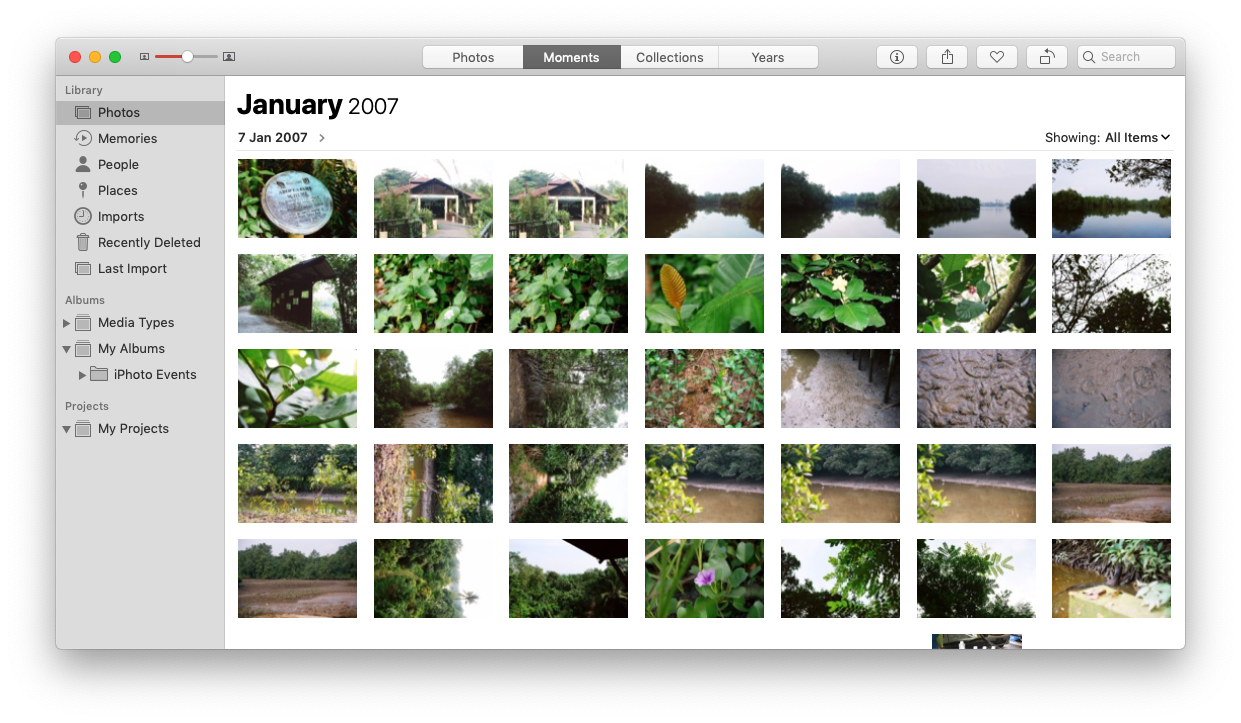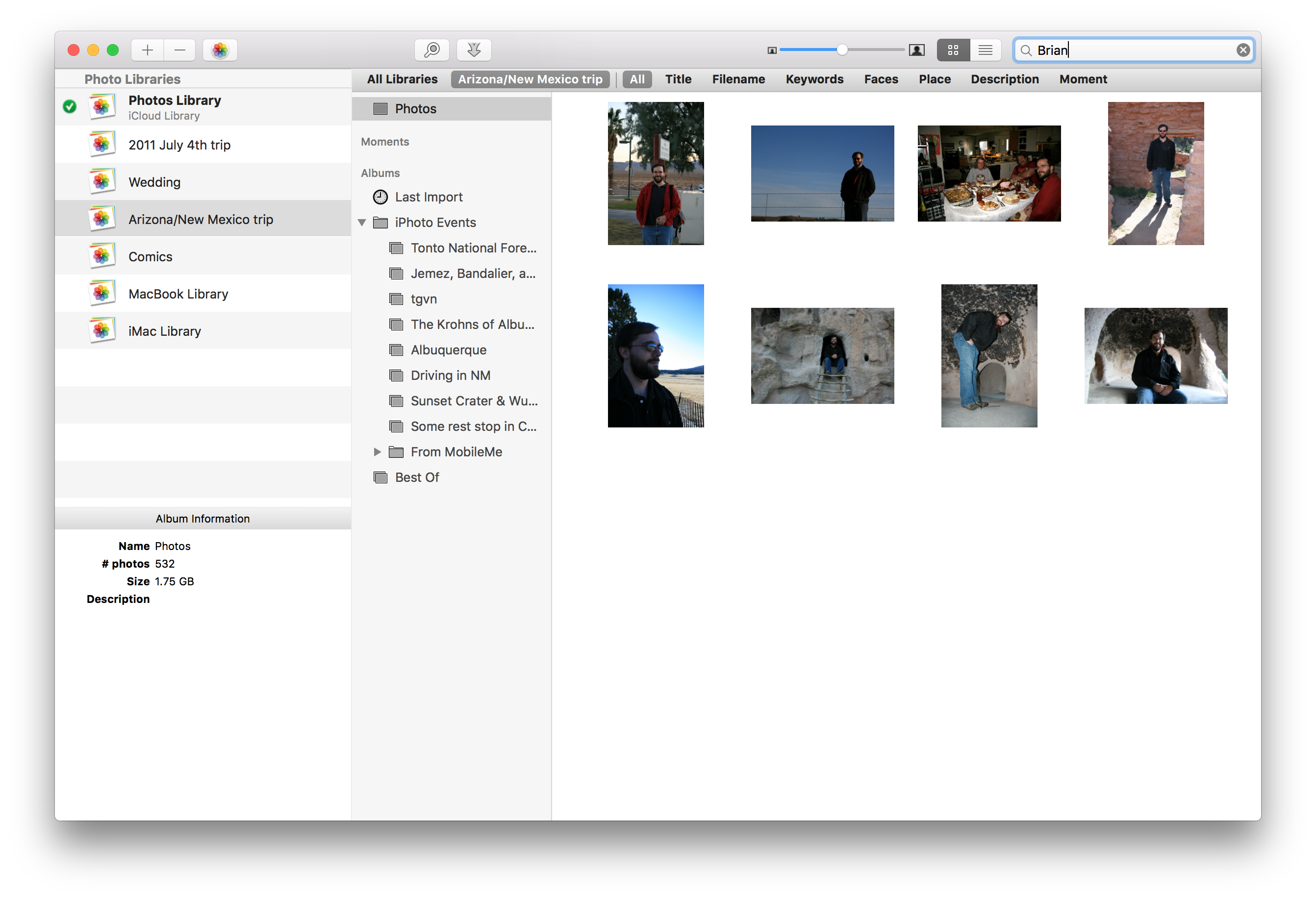
- #POWERPHOTOS IPHOTO LIBRARY INSTALL#
- #POWERPHOTOS IPHOTO LIBRARY CODE#
- #POWERPHOTOS IPHOTO LIBRARY FREE#
In macOS, Photos stores all images in a bundle. Still, Photos is pretty terrible when it comes to dealing with raw images. It’s just plain useful to have all of my photos stored together and seamlessly synced to the cloud. And there’s no way to “divorce” raw files to remove them from the library (and iCloud)! How Photos Stores Raw FilesĪlthough I don’t love the slim editing features in Photos, I’m still using it because of the excellent integration between iOS, macOS, and iCloud. Apple Photos can only detect raw files if they’re (manually) set to be “Original”.

Hopefully Apple will do better in future releases. I have developed a workflow to remove raw images from Apple Photos and iCloud and thought I’d share it. But even though Photos can process and store raw images, it is severely lacking in terms of library management: Smart folders don’t properly recognize them and there’s no easy way to remove them from your library so these huge files can seriously clog up your iCloud account.
#POWERPHOTOS IPHOTO LIBRARY INSTALL#
Users already running 2.x can use the “Check For Updates” menu item within the app to download and install the new version, or grab the latest version from the PowerPhotos web page.Apple Photos isn’t the best application to manage a large digital photo library, but the integration with iCloud, iOS, and macOS is extremely useful.
#POWERPHOTOS IPHOTO LIBRARY FREE#
PowerPhotos 2.3 is a free update, and requires macOS 12 Monterey or later. PowerPhotos conversion and copying works slightly differently from the old Photos migration in a few ways, which you can read more about in the PowerPhotos documentation. If you have purchased a PowerPhotos license, then you can also copy individual photos and albums directly to another Photos library, or merge the iPhoto/Aperture library with a Photos library as well. Once added, there is a simple “Convert” button that will do a straight conversion of the library to a new Photos library, and is available even to users without a PowerPhotos license. So in PowerPhotos 2.3, you can simply add an iPhoto or Aperture library to your library list by dragging it it from the Finder. Once I had that working though, I realized that I could just ship it that way as a feature instead!

This led me to allow adding an iPhoto library directly to the PowerPhotos library list so I could use the PowerPhotos photo browser to view the contents of the library.

#POWERPHOTOS IPHOTO LIBRARY CODE#
I initially assumed I would just have a single command that would let you choose an iPhoto library and convert it, but in the process of writing and debugging this new code I wanted to be able to see what was going on so I could make sure PowerPhotos was reading everything correctly. You can use the Photos “Import” command to import the contents of the iPhoto/Aperture library, but this loses all the album organization, photo metadata, and edits that were performed in that library.Īfter receiving a number of support emails on the topic, one day it dawned on me that I already had code that could read the contents of iPhoto and Aperture libraries: iPhoto Library Manager! So, I dug up the library reading code from iPLM, got it compiling on the latest version of macOS and Apple Silicon, and wrote a layer that would translate the data from iPLM’s data model to PowerPhotos. Trying to migrate a library now just displays an error message saying you need to find a machine with macOS Monterey or earlier to perform the migration. However, with the release of macOS 13 Ventura in 2022, Apple dropped support for this migration process. PowerPhotos included its own migration assistant that would help with migrating multiple libraries, but still left the process of migrating each library to the Photos app itself. I released PowerPhotos 2.3 today, which adds a feature that fills a hole for folks who have old iPhoto or Aperture libraries they want to bring over to Photos.Īpple released Photos as a replacement for iPhoto and Aperture back in 2015, and included a “migration” feature that would let people move their old iPhoto or Aperture library to Photos and preserve most of the library data such as album organization, photo metadata, and edits along with the photos themselves.


 0 kommentar(er)
0 kommentar(er)
